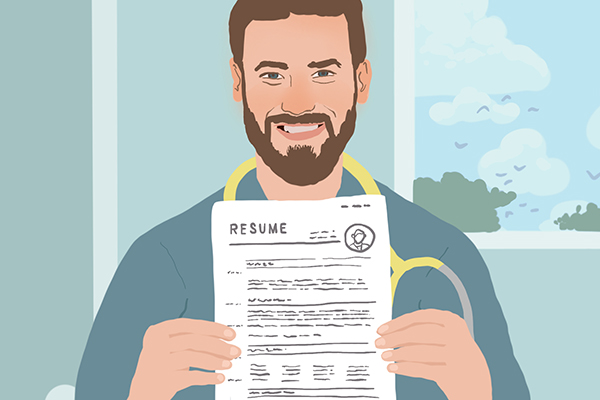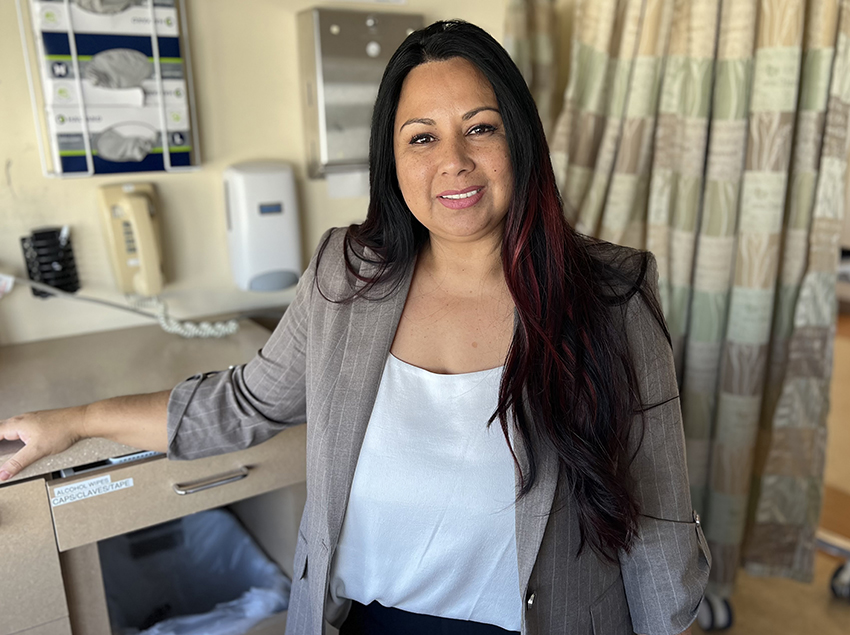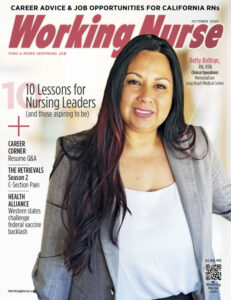Career Corner
Applying for a Nursing Job
Follow these steps to ace the process and land an interview

When you’re applying for a job, your cover letter, resume, and online application are vital to making the very best impression possible. In this column, we’ll explore some suggestions for how to put your best foot forward.
Cover Letters
◗ Confirm that you have specified the correct organization, department, and position you’re applying for. There have been numerous times that I’ve received cover letters stating the candidate’s objective of working for a different organization! The embarrassed candidate had reused the same cover letter template, but forgot to change the hospital name.
◗ Also, make sure you’re reaching out to the right hospital. Sometimes, completely different hospitals have similar names. St. Jude Medical Center in Fullerton, where I once worked, is not the same as the St. Jude Children’s Hospital in Tennessee that Marlo Thomas was affiliated with.
◗ Briefly describe some actual work situations you have experienced as a nurse that are relevant to the position. This personalizes your application, and helps the recruiter and manager remember you.
Resume
◗ List your full legal name. If you prefer to be called by another name, you can note that along with your legal name, e.g., “Elizabeth (Lizzie) Smith.”
◗ Include your telephone number and email address at the top. You may add your mailing address if you like, but it’s not necessary.
◗ Provide an email address that sounds professional and includes your name. Save the cutesy emails (e.g., “”) for personal use.
◗ Don’t include irrelevant personal information. Your age, height, weight, race, marital status, Social Security number, and similar info do not belong on your resume. Do not attach a photo.
◗ Stick to job-related information. Over the years, I’ve seen people add some interesting details to their resumes, hoping to stand out. (The one that tops them all was the candidate who said that their claim to fame was being able to eat an entire box of frozen Girl Scout Thin Mints in less than five minutes. We all got a good laugh out of it, but it didn’t help the candidate get the position.)
◗ Run your resume and cover letter through spellcheck and grammar check, but also have another person proofread to help spot errors your computer can’t.
◗ Provide your nursing license information, including your full name as it appears on the license, the state of issue, the license number, and the expiration date.
◗ List the highest education you’ve completed, including the name of the school,
degree achieved, and graduation date. If you haven’t yet graduated, list the degree as “pending” and indicate the expected completion date. If you’re working towards a graduate degree, you can also list your undergraduate education.
◗ List all your professional certifications and their expiration dates.
◗ For each prior job, list the name of the facility/organization and the dates of employment (month and year). If you’ve moved around a lot, especially
between states, it may be helpful to also specify the city and state.
◗ For prior nursing jobs, specify the type of patients cared for (e.g., med-surg, ICU/CCU, postpartum) rather than the name of the floor. A floor like “4 West” might be telemetry in one hospital and med/surg in other.
◗ Call out any special procedures you have experience performing.
◗ If you’re a new grad:
✔ List all your clinical rotations, including the name of the hospital, types of patients, and number of hours.
✔ Provide details for any externships, including the specialty and number of hours.
✔ List your prior employers, even if the jobs weren’t in healthcare. Other employment gives you valuable experience, so please include it!
Application Process
◗ Even if you find a listing through a job board, go to the organization’s career website to apply directly.
◗ Follow the application instructions exactly as outlined. Failing to follow all
directions may prevent you from moving forward.
◗ Make sure the organization’s Applicant Tracking System (ATS) is compatible with the device and browser you’re using. Some systems are really only set up for
certain Windows browsers.
◗ Have your resume, cover letter, licenses, certifications, and diplomas already saved on your device and ready to upload when prompted. Your recruiter will thank you for this.
◗ Do not write “see resume” on your application. I know it’s frustrating to have to reenter information into an online form, but it’s important to do so.
◗ Double-check any information the ATS parses from your resume. Most systems will read your resume and attempt to automatically fill out the application form with your name, job titles, etc., but they don’t always get it right. Check everything yourself and correct any errors.
◗ Make sure the formatting of the resume you upload into the ATS isn’t too complicated. Text boxes, columns, and other fancy formatting can confuse the system and make it harder to scan the text. You might need to create a simpler .doc or .docx version of your resume to upload with your online applications.
◗ Take the time to review everything carefully before hitting “Submit.”
We hope these tips help you land your next great nursing job!
LEVELL ROMEYN recently retired with 28 years’ experience as a nurse recruiter at various Southern California hospitals.
In this Article: Job Search Advice






